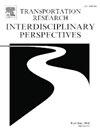卫生和赔偿系统之间的数据联系改善了交通相关伤害的概况
IF 3.8
Q2 TRANSPORTATION
Transportation Research Interdisciplinary Perspectives
Pub Date : 2025-03-01
DOI:10.1016/j.trip.2025.101372
引用次数: 0
摘要
与运输相关的伤害往往需要与医疗和赔偿系统联系,给这些系统带来了沉重负担。本研究旨在探讨连接数据源对剖析陆地交通相关伤害事件的益处,并研究澳大利亚昆士兰州交通相关伤害的特征。研究人员从急诊科、医院和赔偿数据系统中获取了 2012 年 1 月至 2017 年 12 月期间基于人口的回顾性数据。描述性统计(包括频率、百分比和比率)用于描述按人口统计学特征和交通方式特征划分的指数型交通相关伤害事件的发生率,而秩方检验则用于检验各组别事件比例随时间的变化情况。在研究期间,共记录了 164,248 起与交通相关的伤害事件,年发生率为每 10 万人 577 起。86.5%的事件存在于医疗系统数据中,26.2%的事件存在于赔偿系统数据中,12.7%的事件同时存在于医疗系统和赔偿系统数据中。与交通相关的伤害事件在男性(每 10 万人中有 679 人)、15-24 岁人群(每 10 万人中有 1 021 人)和偏远地区(每 10 万人中有 758 人)中发生率最高。大多数寻求医院治疗和/或赔偿的交通相关伤害涉及汽车(46.6%),其中最常受伤的是司机(40.1%)。关联的医疗和赔偿系统数据可以更好地揭示人口中与交通相关的伤害负担。然而,对关联数据源的管理和解释需要专业的知识和开发关联逻辑,以确保估算的准确性。本文章由计算机程序翻译,如有差异,请以英文原文为准。
Data linkage between health and compensation systems improves the profiling of transport-related injuries
Transport-related injury often requires contacts with both health and compensation systems and imposes a significant burden on these systems. This study sought to explore the benefits of linking data sources for profiling land transport-related injury events and examine the characteristics of transport-related injuries in Queensland, Australia. Retrospective population-based data were sourced from emergency department, hospital, and compensation data systems for the period January 2012 to December 2017. Descriptive statistics, including frequencies, percentages, and ratios, were used to describe the incidence of index transport-related injury events by demographic and mode of transport characteristics, while a chi-square test was used to test for variations in the proportion of events among groups over time. There were 164,248 transport-related injury events recorded during the study period, with an annual incidence rate of 577 per 100,000 population. 86.5 % of events existed in health system data, 26.2 % in compensation system data, while 12.7 % existed in both health and compensation system data. The incidence of transport-related injury events was highest among males (679 per 100,000 population), individuals aged 15–24 years old (1,021 per 100,000 population) and in remote areas (758 per 100,000 population). Most of the transport-related injuries who sought hospital-based treatment and/or compensation involved cars (46.6 %), with drivers (40.1 %) being the most frequently injured. Linked health and compensation system data can better reveal the burden of transport-related injuries within a population. However, the management and interpretation of linked data sources requires subject matter expertise and development of linkage logic to ensure the accuracy of this estimation.
求助全文
通过发布文献求助,成功后即可免费获取论文全文。
去求助
来源期刊

Transportation Research Interdisciplinary Perspectives
Engineering-Automotive Engineering
CiteScore
12.90
自引率
0.00%
发文量
185
审稿时长
22 weeks
 求助内容:
求助内容: 应助结果提醒方式:
应助结果提醒方式:


